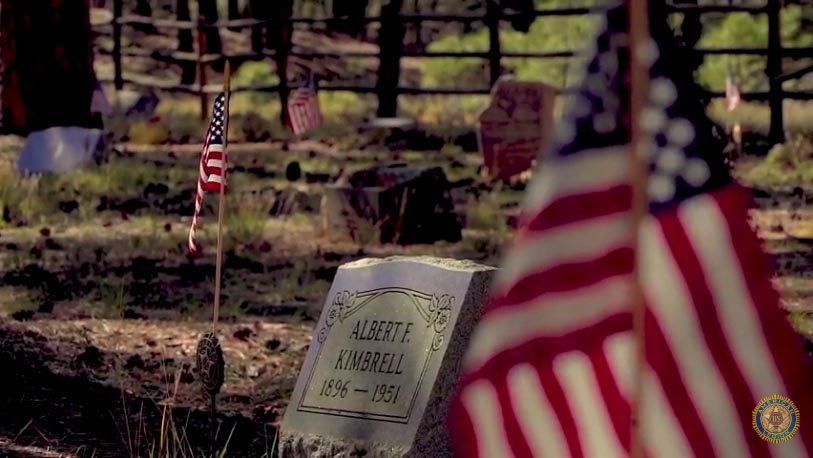
Memories whisper to Al Dunaway as he walks slowly but purposefully through Grand Canyon Pioneer Cemetery.
“It’s like going back to your old home place to see old friends,” says Dunaway, adjutant and service officer for John Ivens American Legion Post 42 in Grand Canyon, Ariz.
“I got a lot of old friends right here I’m coming to visit. I have memories of each one as I walk by – things I did with them, good times we had, bad times we had. You stop and think about all of it with each one of ’em.”
Dunaway, a Navy veteran, is no ordinary visitor to the cemetery on the grounds of Grand Canyon National Park. He’s the primary caretaker, a role filled by Post 42 since the cemetery’s dedication in 1928. Of its roughly 400 graves, approximately 80 are the final resting places for veterans – some dating back as far as the Spanish-American War.
From the park’s founding, Post 42 has conducted Memorial Day observances there. Throughout the year, post members maintain the U.S. flags and bronze American Legion grave markers. They also perform honor guard duties.
About 15 years ago, Dunaway received a call from John Horning, who said he’d pay for an honor guard for the funeral of his father, Charles.
“Your dad already paid for it,” Dunaway recalls saying. “When he jumped at Normandy, and when he jumped at Arnhem, and when he went to Bastogne with the 101st Airborne Division. My God, he paid in full. You don’t owe anything. We’re just fulfilling the contract with him.”
The 2-acre cemetery was established in 1924, but some of its graves are even older. In addition to veterans, those interred include Grand Canyon pioneers, tribal members, former U.S. Forest Service and National Park Service employees, and others whose efforts contributed to the park.
The cemetery is now out of room, though it continues burials for people who have a spouse or immediate family member already interred there.
Visitors enter through a gateway arch, dedicated by members of Post 42 on May 30, 1928. Birds and other wildlife make the cemetery their home, surrounded by large ponderosa pines that cast long shadows. Pine cones, leaves and brush partially cover the area’s dusty footpaths.
“You’ll hear the sound of the wind in the trees, and ravens and other animals around will make noises,” Dunaway says. “Sometimes you get echoes coming back out of the canyon. We’ve done taps here for a funeral – actually, echo taps, because it was echoing back out of the canyon while a bugler was playing. It’s a peaceful, quiet place that makes you relaxed and comfortable when you come here.”
Dunaway pauses at various graves, sharing stories about his mentors, fellow post members and other friends. He helped bury many of them.
“They deserve a nice, quiet resting place,” he says. “They are my brothers and sisters. They served, just like I did. They’re gone. I’m still here. So it behooves me to watch over them and respect them, and to take pride in what I do here. It’s an honor.”
Henry Howard is deputy director of media and communications for The American Legion.



